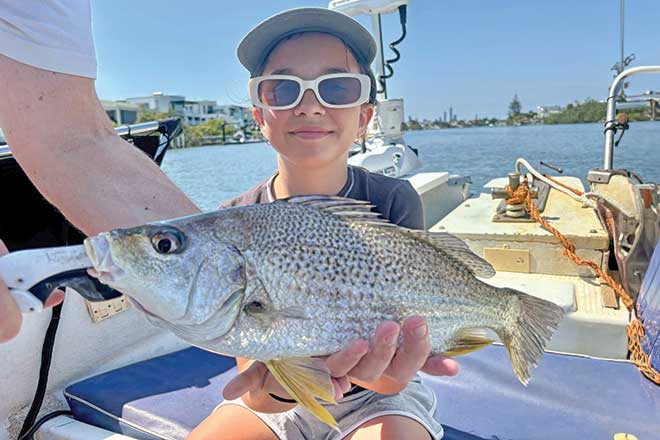For me, getting back to basics when river fishing never gets old or boring.
There’s something about the old-school way of anchoring and casting out bait.
Maybe it’s the tranquility or the ease of it – either way it’s hard to beat for effectiveness and enjoyment.
We are fortunate that the Nerang River regularly produces good numbers of sand whiting all year round.
Depending on the time of year or rainfall, the fishing can be great anywhere from upriver to the southern end of the broadwater at Southport.

Generally, when the water is clear and there hasn’t been heavy rainfall, the fish will move further upriver or feed at night near the council chambers.
When there’s been hundreds of millimetres of rain, the best fishing is downstream.
Among the schools of big whiting, there will also be juvenile mulloway, trevally, grunter, bream and tarwhine.
Nothing is more important when river fishing than the right bait.
Worms are great anywhere upriver from Sundale Bridge, while yabbies are best in the broadwater.
If you can get them, bloodworms are the better option but I use beachworms and they still work well.
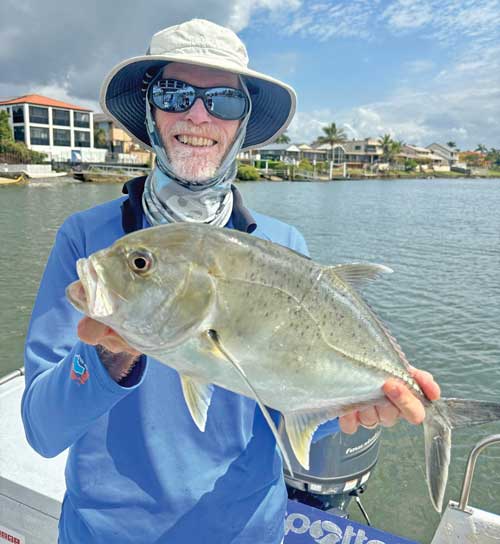
Next is the right tackle.
You don’t need expensive gear for light-tackle bait fishing, though I do like soft-tipped rods of at least 7’ paired with 2500 size reels.
Because 10lb monofilament is an ideal main line for this type of fishing, you don’t need braid for your line.
The trace that works for me is a number 3 ball sinker running above a small swivel, then at least 1m of 6lb fluorocarbon leader attached to a number 2 size Mustad fine worm hook.
Using a light leader helps fool large wary whiting while keeping the reel drag light enough to prevent bust offs from even bigger fish.
Only use a small bit of worm on each bait – just enough to completely cover the whole hook.
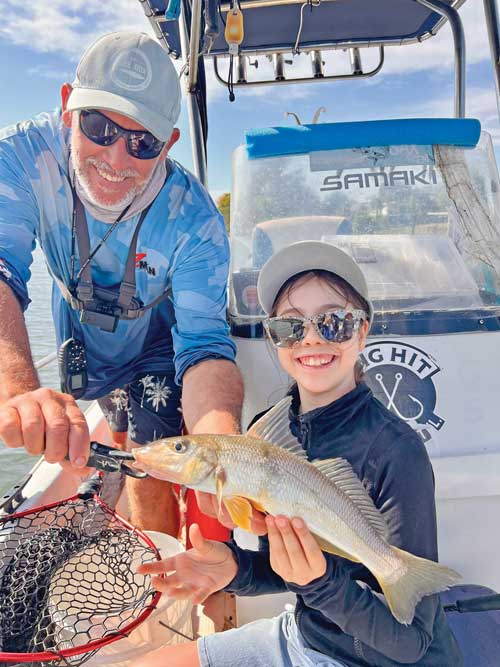
From there it’s a matter of finding the fish and every day is different.
I move many times a day but often cover only a short distance.
If I don’t get bites after 10 minutes on a new spot, I’ll move on.
I have a Minn Kota Ulterra electric motor, which is great for spot locking.
I do not miss the days of dropping and pulling anchor 20 times a day.
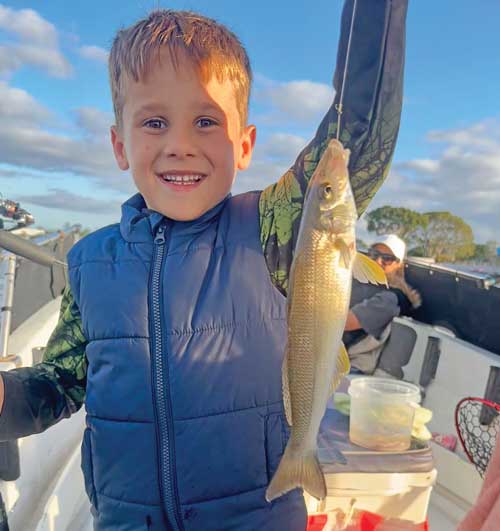
Fish in the river love tidal flow and feed hardest during the strongest part of the flow.
Mostly, I find the better fish in shallow areas no deeper than 3m – usually 1-2m is best anywhere in the river.
I cast out as far as I can in, or side on to the direction of the tide.
If you cast against the tide, the trace will come back towards you with the flow, resulting in missed bites and rolling over snags.
Once the bait is cast out, I always place the rods in rod holders.
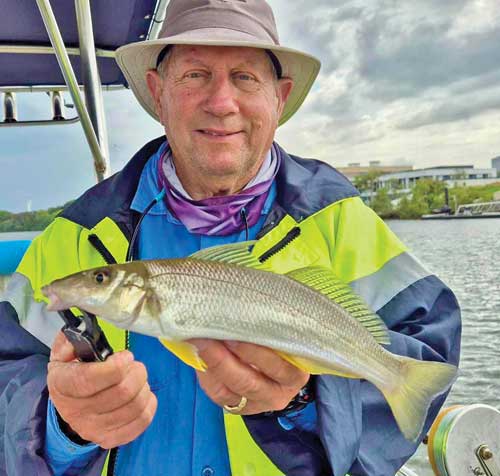
Whiting are often timid feeders and when holding the rod it’s too tempting to strike early and miss good fish.
Whiting will first mouth and slowly crush the worms before swallowing, so be sure to wait for the rod tip to fully load up before striking only once to set the hook.
Most other fish will greedily grab the bait and instantly run.
If a rod hasn’t had a bite in five minutes, wind it in, check the bait and cast back out at a slightly different angle and/or distance.
When you catch a good-sized whiting, try to remember exactly where you cast the last bait and repeat the process.
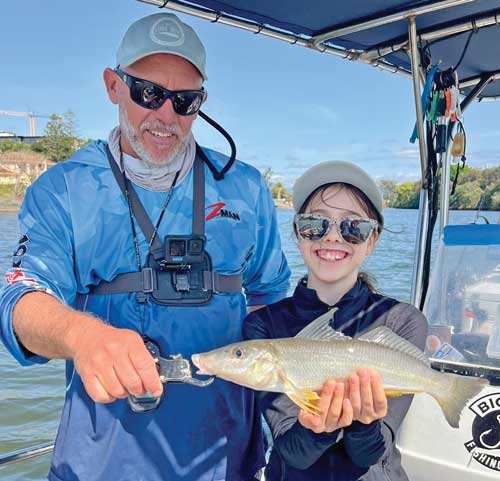
Whiting are a schooling fish, so there’ll often be more where you caught the previous one.
They move slowly with the tide while grazing on food.
In Queensland, the current size limit is 23cm for sand whiting, 25cm for bream and tarwhine, 30cm for spotted grunter and 40cm for barred grunter.
Sand whiting have a possession limit of 30 per angler.
In my opinion this is too much and should be halved.
Just because you can catch and keep more fish, doesn’t mean you have to.
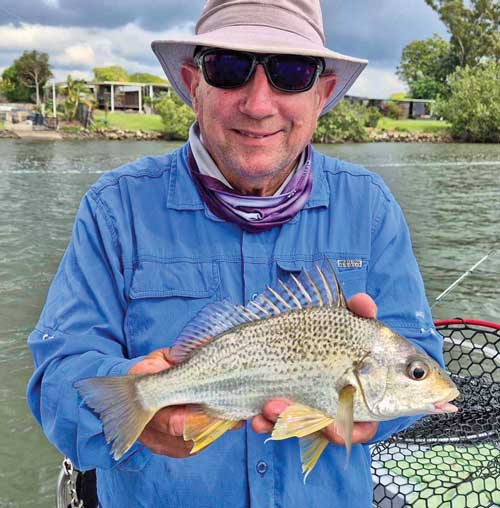
Personally, I would only keep enough to eat fresh for one dinner, and I never freeze fish.
Remember, it’s not a daily limit – whiting in your freezer counts towards the possession limit.
Also, if the fish you’re throwing back has swallowed your hook, remember to remove it first.
Often these fish won’t survive, floating away to get picked up by birds of prey, and we don’t want these beautiful birds getting hooks in them.
To book a charter with myself or Brad, or if you have any fishing related questions, visit goldcoastrivercharters.com, text 0432 990 302, email fishingwithclint@gmail.com or find us on Facebook at Brad Smith Fishing Charters.
 Bush ‘n Beach Fishing Magazine Location reports & tips for fishing, boating, camping, kayaking, 4WDing in Queensland and Northern NSW
Bush ‘n Beach Fishing Magazine Location reports & tips for fishing, boating, camping, kayaking, 4WDing in Queensland and Northern NSW

